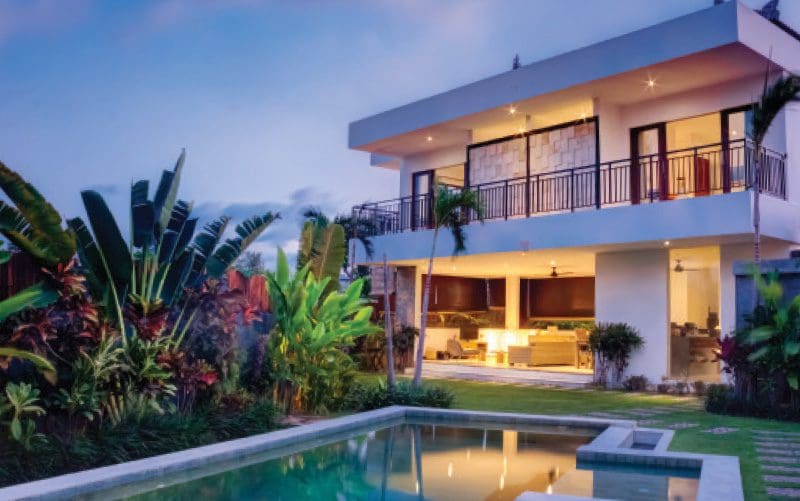
Lighting Your Life – Natural and Artificial Have Their Place
Lighting Your Life – Natural and Artificial Have Their Place. Incorporating as much natural light as possible in your living space is a universally desirable building design goal. Even if the outdoor view or weather leave something to be desired, natural light generally has a positive influence on people’s physical and mental wellbeing. Add to many Costa Rican homes a spectacular vista of the ocean, rainforest, mountains or exotic backyard garden and it doesn’t get much better. Seeking home design features that optimize the lighting, view and exposure to all things tropical is a given.
Natural lighting, naturally, is synonymous with lots of large windows to the outside and open spaces within walls. That is not to say their placement is as simple or straightforward as it may seem. Decisions about proper location of windows and walls cannot be made randomly, nor is lighting a stand-alone factor. With sun exposure comes weather-related considerations for temperature, humidity and air flow. Improper placement of windows can hinder conditions for cooling and natural cross-ventilation, with a detrimental impact on energy efficiency. That means eco-consciousness is as relevant to natural light by design as it is an artificial lighting concern. As with any sustainable living strategies, we recommend consulting with an architect or other accredited professional.
Eco-consciousness is as relevant
to natural light by design as it is
an artificial lighting concern.
In the same vein, artificial lighting is not necessarily an easy afterthought aspect of home design limited to placement of power outlets and wall switches. Increased emphasis on energy savings has widened the consumer options but with no less need for strategic planning. Beyond the overriding green goal of shunning incandescent lamps altogether, think carefully about the type and quality of artificial lighting best suited to specific locations and situations.
Essentially, artificial lighting falls into three categories: ambient (general), accent (creating focal points) and task (specific). All three types may be needed somewhere in your home, indoors and outdoors, ideally with independent controls that might include dimmers or sensors.

It is no secret that electricity in Costa Rica is very expensive. On average, according to the service provider ICE (Costa Rican Electricity Institute), lighting accounts for almost 15 percent of your energy usage. Here, as in most parts of the world, power reduction measures have made more types of energy-efficient lamps available and more affordable. In an effort to eliminate the use of incandescent light bulbs, CFLs (compact fluorescent lamps) and LED (light emitting diodes) have become increasingly common and less expensive. They consume a fraction of the energy and last 25 times longer than incandescent lights, with long-term cost savings of up to 75 percent.
Knowing which type and brightness of energy-efficient bulbs you need is important when making a first-time or replacement purchase. Check the package label for lumens (brightness indicator) instead of watts (energy use). A basic guide appears on the opposite page.
The other key factor in lamp selection is color temperature, measured on the Kelvin scale ranging between 2700K and 6500K. The lower the K value the warmer the color rendition (warm yellow, soft white), while lamps with higher K value are cooler (more bluish tone). Soft white light is ideal for all areas that are not task oriented, and cool light is best for areas needing great general lighting for the job at hand. Keep in mind that warmer light gives a softer look to surfaces as cool light diminishes ambiance, making spaces feel more stark and sterile.
It’s also advisable not to mix lamp color temperatures sharing the same control (light switch) for the same application. With artificial light combined with natural light, you can create the perfect ambiance for any space, day or night.
Applying for Costa Rica Residency
HOA Meetings
Tax Time, Corporations and Property Owners
Corporate Tax Update
Power of Attorney in Costa Rica
Annual Tax Over Costa Rica Corporations
Due Diligence, Purchasing a Vehicle in Costa Rica
Costa Rica Income & Sales Tax
Estate Planning
Purchasing a Condominium
Buying a Business

